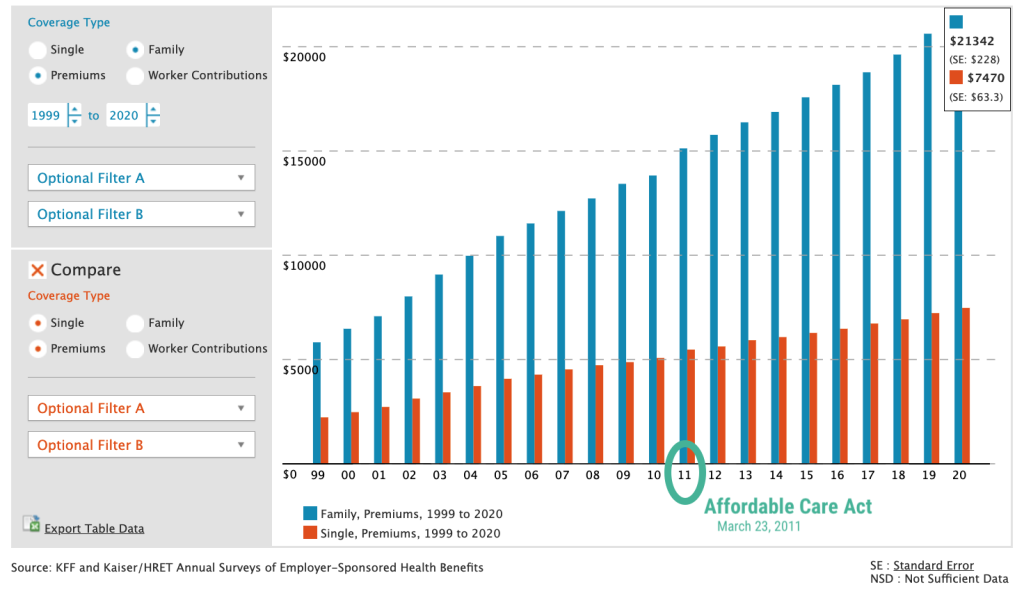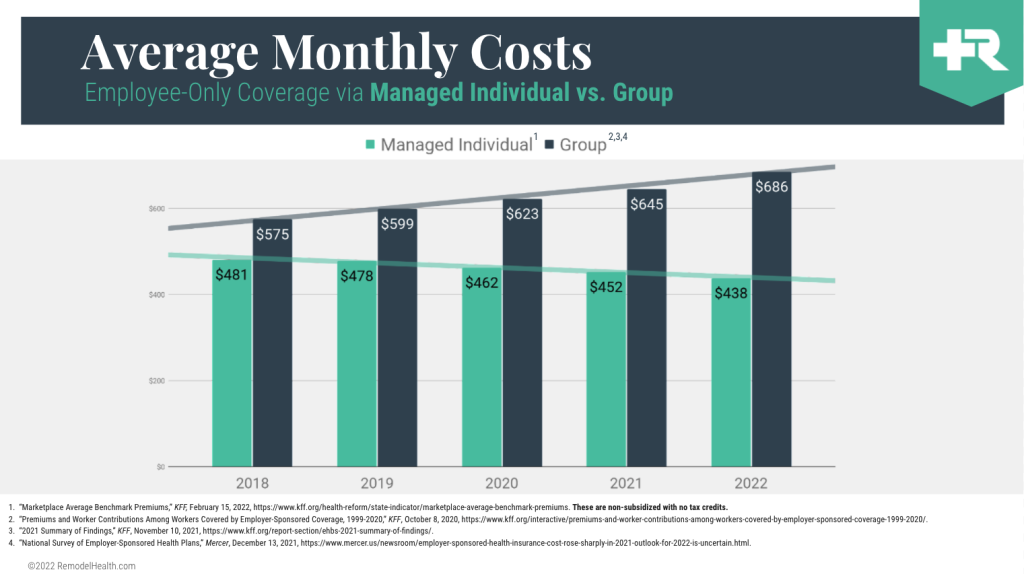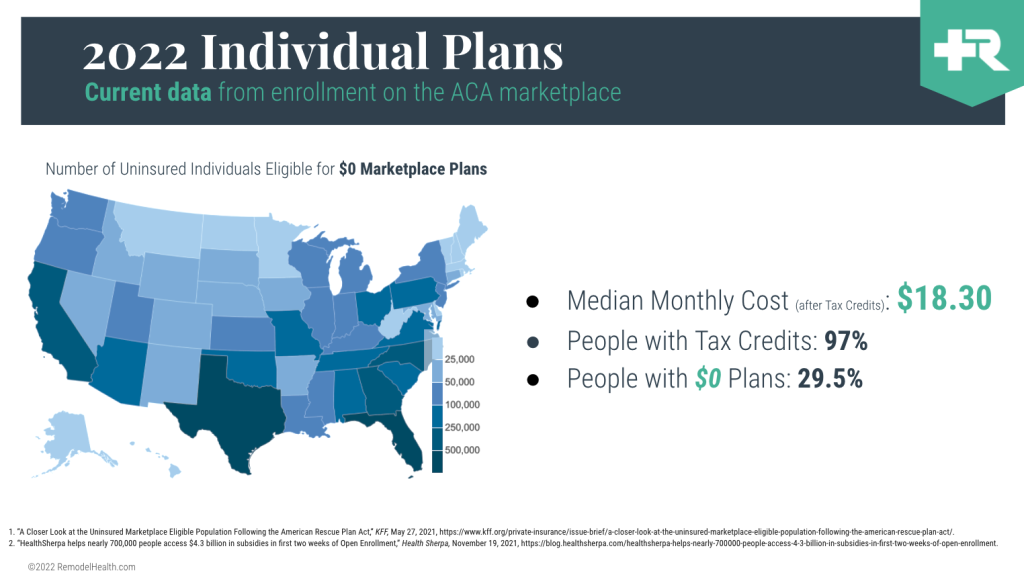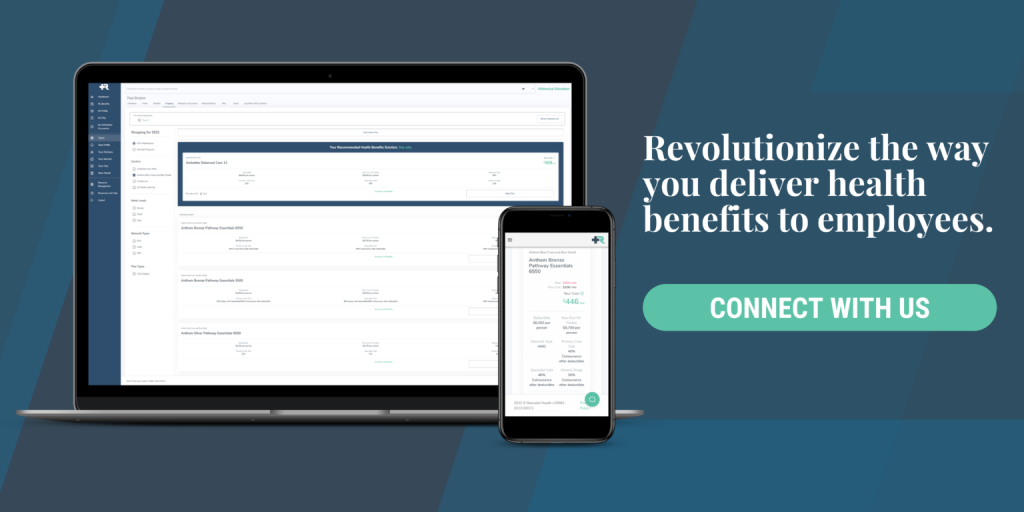Alternative health benefits for private schools are one of the best methods for finding significant savings and taking better care of faculty and staff. And if you are the administrator of any educational institution, being fiscally responsible and taking care of your employees are two top priorities!
However, this has probably been really tough to accomplish as you continue to experience unpredictable rate increases on health benefits every year. This is also likely a big reason why many private schools have had to increase their tuition by 54% over the last 10 years.
Now, organizations are realizing that spending less on their health benefits is one way to both save money and care well for employees. But how can you spend less without giving less?
If we keep doing the same things, we’ll keep getting the same results.
Thankfully, several new alternative health benefits options have developed over the last decade that allow organizations to save money, and still ensure a high quality benefit for employees! The opportunity for organizations to take advantage of these options for their teams has never been better! Today, we’ll provide a quick lesson on the cheapest alternative health benefits for private schools.
1. Alternative health benefits to what? To traditional group plans.
When we talk about “alternative health benefits,” we’re talking about an alternative to traditional group health benefits. Traditional group is probably the method of health benefits that you’re most familiar with, in which the employer picks out one plan for all employees, no matter if the employees like it or can afford it. Check out this data:

This is two decades of data showing unsustainable increases in the cost of health benefits. Even after the Affordable Care Act arrived in 2011, nothing has really changed with average group plan prices. They continue to go up!
2. Alternative health benefits do not equal bad options.
Next I want to emphasize that “alternative” does not equal “bad.” As we mentioned above, while the Affordable Care Act was not able to change the trajectory of cost increases for traditional group health plans, it did begin access for individual insurance plans. This is the alternative that we’re focused on today, and the great news is that these plans are so good!
All individual health insurance plans are guaranteed issue, which means that you cannot be charged more or have any coverage caps on preexisting conditions or ongoing procedures. So even if someone on your staff is dealing with a current health situation, they won’t lose coverage!

The next great news is that these are insurance plans from reputable carriers that you’ve likely heard of. Carriers throughout the United States include companies such as Blue Cross Blue Shield, Cigna, United Healthcare and many more. On average there are 6 carriers available per state and 45% of Americans actually have more than 50 different health plans to choose from! And the individual insurance plan method is still growing and getting even better, as 17 new carriers were just added into the mix.
3. Cheaper alternative health benefits are actually better.
Now that we’ve established that individual insurance plans make a great alternative to traditional group plans, let’s talk about how these cheaper plans are actually better for your private school. Specifically, let’s talk about how they help you take better care of your faculty and staff by getting them better coverage.

This data over the past five years shows an incredible trend when we compared traditional group coverage for an employee-only plan against the relative cost of individual insurance for an employee-only plan. This is an apples-to-apples comparison of group plans vs. individual insurance—and the price keeps going down! Which is a win-win for both employers and employees!
Learn more about how Remodel Health’s ICHRA+® product can benefit your organization
4. Alternative health benefits are best.
The last thing I want to highlight is that alternative health benefits are actually the best option! You see, the national average cost of individual insurance plans shown above is missing a vital component.
This component is a discount. Individual plans qualify for something called the Advanced Premium Tax Credit (APTC). This is not the kind of tax credit you receive at the end of the year on your tax return. Instead, it’s paid in advance because APTCs work as a discount to the insurance plan. The IRS sends the tax credit to the insurance carrier on behalf of the consumer. To your staff or faculty, it simply feels like a huge discount on the plan!

These discounts matter because of how big they really are. For the latest 2022 individual insurance plan enrollees, the median monthly cost was $18.30. Yes, you read that number right! This is possible because tax credits are available to 97% of people! And yes, the discounts are in addition to the individual plans already being cheaper.
In fact, when tax credits are big enough based on household details, the data actually shows that 29.5% of all enrollees qualify for $0 plans. This phenomenon occurs when the tax credit qualification is greater than the cost of the individual insurance product available. This is why cheapest is best when researching alternative health benefits for private schools.
What can this look like for your private school?
To recap, alternative health benefits for private schools are one of the best methods for finding significant savings and taking better care of your faculty and staff. Are you intrigued? I want to invite you to join me on my next free, educational webinar, just to simply learn more about the details behind this new world of individual health benefits!

Important Notice: Remodel Health does not intend to provide specific insurance, legal, or tax advice. Remodel Health always recommends consulting with your own professional representation to properly evaluate the information presented and its appropriate application to your particular situation.
